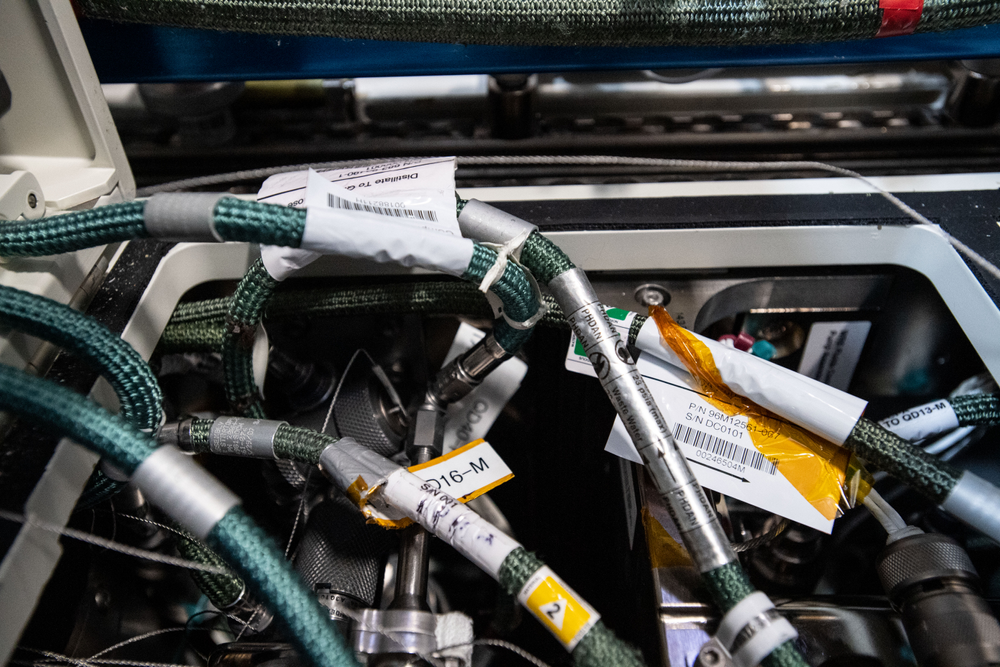Station Science Top News: April 13, 2023
DNA analysis revealed the presence of multiple unique bacterial and fungal biofilms in two hoses of the ISS Urine Processor Assembly (UPA) for the first time. The findings show that these lines can develop biofilms, which could deteriorate materials and impede access to clean water. This finding highlights the need for design improvements to prevent biofilm formation and continuous monitoring of water systems aboard the International Space Station to reduce the risk to crew members on future missions.
The UPA is one of two units in the Water Recovery System needed for processing non-potable water. The hoses are not regularly checked for microbes, but had been removed during UPA refurbishment and tested by BEST researchers back on Earth.

View of RGN Air Urine Processing Assembly (UPA) during Expedition 66. Credits: NASA/Thomas Marshburn
Read more here.
***
Shoots and roots in three collections of the grass-like herb Brachypodium distachyon responded differently to the space station environment, displaying changes such as oxidative stress, wall remodeling, and DNA modifications. In addition to microgravity, radiation, poor airflow, hormone levels, and other variables may have played a role. Assessing plant survival in space could improve crops on Earth and support the use of plants in bioregenerative life support systems to produce food, recycle carbon dioxide, and serve other functions in space.
Many experiments have evaluated the ability of plants to adapt to spaceflight, but few have involved monocot plants, which constitute most of the crops used on Earth. APEX-06 investigated the response to gravity of a monocot, Brachypodium distachyon, using transcriptome (RNA) analysis. Some of the general responses seen resemble those observed in Arabidopsis thaliana, a dicot extensively studied in space, and some are specific to B. distachyon. Monocots and dicots have different leaf structures and root systems.

***
The SpaceX Dragon resupply craft is scheduled to undock from the station on April 15. It returns samples from a number of experiments to the ground for additional analysis. These experiments include:
- Veg-05, which examined the effects of light quality and fertilizer on fruit production, microbial safety, and nutritional value of dwarf tomatoes. Growing plants in space could provide fresh food and enhance the overall living experience for crew members on future missions. Harvested tomatoes, water samples, and swabs of the growth hardware return to the ground for examination.
- Myotones, an ESA investigation, observed muscle properties during long-term spaceflight to help protect muscle function in astronauts and to rehabilitate people with muscle function loss on Earth. Scientists plan to examine biomarkers in blood samples collected during flight upon their return to Earth.
- SoFIE-Gel studied how fuel temperature affects material flammability and could improve safety of crew members on future missions. Gel samples from the investigation are returning to Earth for further analysis.








